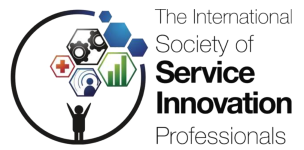What do we mean by service?
By Ralph Badinelli, PhD, professor in the Department of Business Information Technology of the Pamplin College of Business of Virginia Tech

The service sector is by far the dominant part of the economy in the developed and developing world, yet the discipline of service science is still in its infancy. The purpose of International Society of Service Innovation Professionals (ISSIP) is to promote service science, design, engineering and management through advancement of the professional development, education, research, practice, and policy work of its member individuals and institutions.
Researchers and practitioners from several different disciplines have challenged the conventional definition of service. Many studies of service systems and service industries revealed that the key distinguishing feature of service is the co-creation of value between the service recipients (customers) and the service providers. Therefore, we define service as the application of knowledge to co-create value, and service science as the study of diverse, interconnected, complex “human-centered value-cocreation systems” in business and society.
The residue of outdated definitions of service have left many service professionals confused about the true nature of service and the broad range of disciplines that have an interest in this field. The definition of the word “service” has undergone a transformation within the last decade. The conventional view of service is that it produces outcomes that are intangible, heterogeneous, instantaneous and perishable. However this definition fails to differentiate products from service (Sampson & Froehle , 2006).
Service Dominant Logic
In 2004, Vargo & Lusch provided a precise codification and substantiation for the co-creation foundation of service, which they call Service Dominant Logic (SDL). See Vargo & Akaka 2009) for an updated and concise explanation of the SDL theory. With the SDL perspective on service we can define service as a collaborative process of service recipients and service providers for the co-creation of value. SDL is based on 10 Foundational Premises:
FP1 Service is the fundamental basis of exchange.
FP2 Indirect exchange masks the fundamental basis of exchange.
FP3 Goods are distribution mechanisms for service provision.
FP4 Operant Resources are the fundamental source of competitive advantage.
FP5 All economies are service economies.
FP6 The customer is always a co-creator of value.
FP7 The enterprise cannot deliver value, but only offer value propositions.
FP8 A service-centered view is inherently customer oriented and relational.
FP9 All economic and social actors are resource integrators.
FP10 Value is always uniquely and phenomenological determined by the beneficiary.
Service Science Management and Engineering
Concurrent with the dissemination and adoption of an SDL perspective on service, IBM initiated a disciplinary framework known as Service Science, Management and Engineering (SSME). Service innovation can be viewed as the application of service science to the design and management of service systems. The SDL perspective clearly indicates that this science is in its infancy and is much more than special cases of production systems for goods or a by-product of goods production and delivery.
Rather, SSME advocates a holistic, multidisciplinary approach to service innovation by recognizing that service is a co-creative effort among several parties. Service recipients are a complex, complicated and context-dependent enterprises that require new thinking that goes beyond modeling conventional processes that were developed for manufacturing and product supply chains.
T-shaped professionals
New theories, methodologies and empirical evidence developed and critiqued by people from many diverse disciplines are needed to advance the science, management and engineering of service. With the understanding of a service system as a complex, context-dependent network of resource integrators, one immediately sees the need for multidisciplinary approaches to innovation in service design and management. Achieving collaboration of people with deep knowledge in one field with people with deep knowledge in other fields is a unique challenge for the study of service. The recent advocacy of the need for “T-Shaped” professionals is a natural outcome of service research (Barile et al, 2012). ISSIP was formed to provide a collaboration space of professionals from all of the diverse fields that impinge on service, and to enable each of these professionals to shape her/his expertise into a more effective form for the pursuit of service innovation.
References
Barile, S., G. Franco, G. Nota, M. Saviano (2012). “Structure and Dynamics of a “T-Shaped” Knowledge: From Individuals to Cooperating Communities of Practice” Service Science 4(2):161-180.
Sampson, S.E., Froehle, C.M. (2006), “Foundations and implications of a proposed unified services theory”, Production and Operations Management 15(2): 329-343. http://onlinelibrary.wiley.com/doi/10.1111/j.1937-5956.2006.tb00248.x/abstract
Vargo, S., R. F. Lusch. (2004). Evolving to a New Dominant Logic for Marketing. Journal of Marketing 68 (1) 1-17. http://sdlogic.net/JM_Vargo_Lusch_2004.pdf
Vargo, S. L. and M. A. Akaka (2009). “Service-Dominant Logic as a foundation for service science: Clarifications.” Service Science 1(1): 32-41. http://www.sdlogic.net/Vargo_Akaka_2009_SS.pdf
